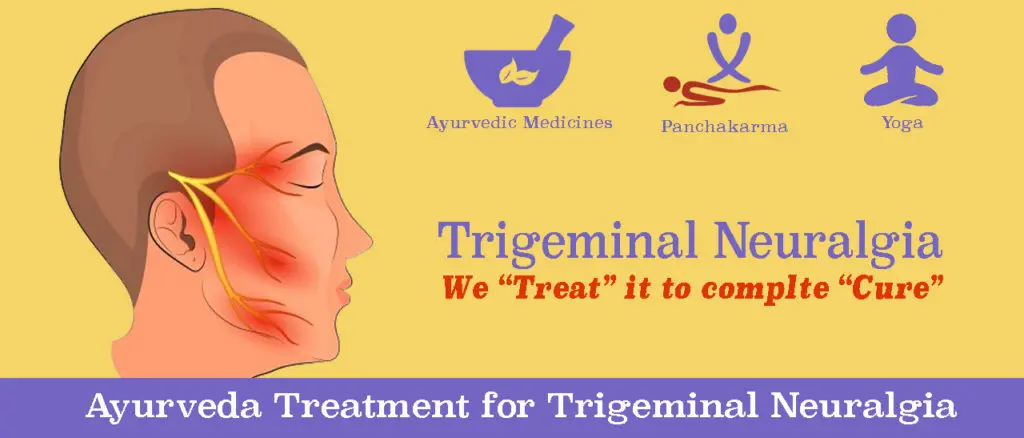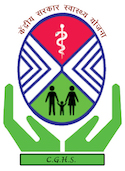You just feel the pain in your tooth while chewing food. But on check-up, you find that everything is perfectly fine with your teeth. And this pain starts going to your lower jaw, eyes, and even to the nose. You comb, chew, brush your teeth and this leads to severe pain in the face, jaw, lips in ears, and eyes. Then you come to know about a condition- Trigeminal Neuralgia. The Ayurvedic Treatment of Trigeminal Neuralgia can help you to lead a normal life.
Initially, these attacks are short and mild. But with chronicity and time, there might be longer bouts of pain which can be more frequent.
This is almost the same story with every patient with trigeminal neuralgia. Once diagnosed with this disease- you are now suffering from one of the most painful neurological disorders.
But you need not to worry about this condition. Ayurveda has promising results for this condition. Ayurveda has proper treatment for Trigeminal Neuralgia. Right diagnosis and right intervention through Panchakarma and medicines can help you to get rid of this disabling pain. Ayurveda refers it as Vata Vyadhi and specifically Anantvata. Just scroll down to know more about this disease and ayurveda aspect of the condition.
Vaidya Pardeep Sharma
Here are all the details about this condition and the Ayurvedic Treatment of Trigeminal Neuralgia.

Trigeminal Nerve
Trigeminal nerve and its branches. The trigeminal nerve is the fifth cranial nerve, and one of the most complex. It has both sensory and motor components, innervating most regions of the face, scalp, and anterior neck, with sensory fibers supplying sensation to the face. It also supplies muscles that control chewing movements for mastication. The trigeminal sensory root can be divided into three divisions: ophthalmic, maxillary, and mandibular.
As the name suggests, the Trigeminal nerve has three branches.
- Ophthalmic: This root supplies to forehead, nose, and eyes.
- Maxillary: Lower eyelid, side of nose, cheek, gum, lip, and upper teeth get the supply from this root.
- Mandibular: This root gives neural supply to the jaw, lower teeth, gum, and lower lip.
The Trigeminal nerve is notoriously susceptible to damage which occurs in different forms. Paresthesia or tingling sensations are experienced when the nerve becomes inflamed or exposed to compression. Neuralgia refers to the experience of sudden, brief jolts of pain that can be triggered by stimuli on or near any one of the branches of the sensory nerve. Neuralgia usually results from herpetiform neuralgia (this occurs as a result of herpes zoster) and migraine headaches. Herpes simplex virus 1 (HSV-1) is also associated with trigeminal neuralgia symptoms such as tingling, numbness, and burning sensations.
Generally, the pain will be in one of the branches and its supply. But this pain can be in one or more branches at a time. But the pain remains on one side of the face in most cases.
What is Trigeminal Neuralgia
The Trigeminal is a nerve of the face. This nerve supplies to the jaw, eyes, ear, nose, and lips.
Neuralgia is severe pain along with the supply of the nerve.
Therefore trigeminal neuralgia is a condition, where pain runs along the trigeminal nerve of the face.
Abrupt facial pain in the lower part of the face, around the jaw, nose, ears, eyes, and lips is the cardinal feature of trigeminal neuralgia.
There are two types of neurological pains.
In one case, the pain is there because of some injury- cut or burn. And in the second case, pain occurs because of the damage to the nerves. The pain of the trigeminal neuralgia is of the second type. The nerve is damaged therefore pain occurs in the nerve and its supply.
Symptoms of Trigeminal Neuralgia
Here are the common symptoms of this condition. This list is not applicable to everyone. There might be certain conditions that won’t be there in certain patients.
- Pain is the most common symptom of the trigeminal neuralgia.
- Nature of pain will be like stabbing, cutting and burning.
- Patient feels like an electric shock, all of a sudden.
- Pain keeps on coming and going. This happens in episodes.
- In early cases there will be light pain for short intervals. But with chronicity pain will last for long and will come regularly.
- Pain increases due to certain activities where supply of trigemnial neuralgia is involved like- chewing, brushing, combing.
- Mostly pain of trigeminal neuralgia will be on one side of the face, but in certain cases it can present on both sides.
Location of pain in the case of TM is according to the involvement of the nerve root.
- In case of involvement of Ophthalmic branch: Pain radiates to forehead, nose, and eyes. This root is least commonly involved, only 5%.
- When Maxillary branch is involved: Pain will be there in the lower eyelid, side of nose, cheek, gum, lip, and upper jaw.
- Mandibular: This root gives neural supply to the lower jaw- gums, and lower lip.
In severe cases of trigeminal neuralgia, there might be a hundred attacks in a day. And in some mild cases, there won’t be a pain for months and months.
Causes Of Trigeminal Neuralgia
There are two types of different causes behind trigeminal neuralgia. This categorization is important to understand to plan the treatment of the condition.
- Pressure on the nerve or ganglion of the trigeminal.
- Demyelination of the nerve
Pressure on the nerve or ganglion
When there is pressure on the nerve or ganglion of the trigeminal. There will be the condition of neuralgia with nerve. This pressure can be because of the blood arteries or due to some tumor-like growths.
Trigeminal neuralgia because of tumors is not that common. The past history of hypertension and pressure due to arteries is the most common finding. This is the reason, TM occurs in patients who come in the age bracket of 40 to 50 years.
Demyelination of the nerve
A sheath covers the nerves. We know it as the myelin sheath. This sheath protects the nerves. This sheath is just similar to the plastic covering on the electric wires. Because the role of plastic covering and myelin sheath is to stop the current from diffusing.
When this myelin sheath decays we call as demyelination. The normal behavior of nerve disturbs and the patient starts getting severe pain bouts.
This is the reason, why in a condition of demyelination like Multiple Sclerosis, this condition appears commonly.
Sometimes the cause remains unknown. But not in the case of Ayurveda.
Ayurveda About Trigeminal Neuralgia
In Ayurveda, there are certain conditions that are similar to the condition of Trigeminal neuralgia. These are-
- Ardhaavbhedaka
- Vataja Shirah Shool and
- Anantavata
These all have particular symptoms which resemble the condition of trigeminal neuralgia.
Ardhavabhedaka is a condition where pain will be unilateral on the face and head region. The nature of pain in this condition is – a pulsating, throbbing type of pain. Just like the condition of trigeminal neuralgia, this pain keeps on coming and going (Paroxysmal). The unique symptom of this condition is – photophobia. This condition is different from Trigeminal neuralgia because in this case, pain is not affecting the facial areas.
In the case of Vataja Shirahshool, pain is more in the head. Pain is associated with stiffness in the shoulders and giddiness. This condition more resembles headaches caused by cervical problems. And no pain on the face, eyes, and ears makes it more like pain due to spinal involvement.
The third condition is much closer to the Anantavata because of the unique symptoms associated with this.
- Intense pain in the manya – region of carotid arteries.
- Pain in the nape ofneck.
- Twitching near neck.
- Locking sensation of the Jaw.
- Throbbing pain in the eye and ears.
Therefore, this condition of Anantavata is closer to the condition of Trigeminal Neuralgia.
But at Sukhayu we don’t believe in the “analogy” of the signs and symptoms. We believe in working on pathological processes. Therefore we believe in diagnosing the condition properly so that complete eradication of disease can be made. Our approach of ayurvedic treatment of trigeminal neuralgia is based on the same concept alone.

Ayurvedic Treatment of Trigeminal Neuralgia
Ayurvedic science believes in a combination of body, mind, and spirit. It’s necessary to treat all three aspects in order to achieve balance. In Ayurvedic Treatment for Trigeminal Neuralgia treatment aims at restoring this balance by removing factors that cause imbalance through lifestyle changes, herbal remedies as well as dietary modifications that include following specific diets according to doshas imbalances.
These doshas are Vata (space and air), Pitta (fire), and Kapha (water and earth). To know which dosha is causing the imbalance, an Ayurvedic practitioner will ask a series of questions about lifestyle, eating habits, and health conditions.
The approach of Ayurvedic Treatment for Trigeminal Neuralgia is to correct the imbalance of the doshas. This is done by dietary modifications, lifestyle changes, and the use of herbs.
Dietary modifications:
The aim of dietary modifications in trigeminal neuralgia is to reduce the intake of foods that stimulate the trigeminal nerve. These include spicy foods, acidic foods, caffeine, and alcohol. It is also important to eat plenty of fresh fruits and vegetables which are rich in antioxidants and minerals.
Lifestyle changes:
Some lifestyle changes that can help to relieve symptoms of trigeminal neuralgia include avoiding stressful situations, practicing yoga or meditation, and getting regular exercise.
Herbal remedies:
Herbal remedies can be very effective in treating trigeminal neuralgia. Some herbs that are commonly used include ginger, turmeric, lavender and chamomile. These herbs help to balance the doshas and reduce inflammation. They can be taken as capsules, teas or tinctures.
The Ayurvedic Treatment of Trigeminal Neuralgia
There are a few key points to remember when it comes to the Ayurveda treatment plan of TM. Here is the list
- Trigeminal Neuralgia (TM) is a condition which is progressive. Thus the first step is to ensure that disease should not progress further.
- This is a chronic condition. And no decision on the treatment possibilities can be made on basis of 15 days or 30 days.
- As per Ayurveda, food and diseases are linked always. Therefore a patient needs to follow the proper diet and lifestyle.
- The main aim of treatment is to pacify Vata and Pitta doshas.
- Panchakarma plays an important role in the treatment of trigeminal neuralgia.
- If you are taking medicines from allopathy it is never advisable to stop the medicines all of a sudden.
Treatment of TM is always under these points only. It is important to understand that Ayurveda works on the scientific ground. And whatever treatment we give for trigeminal neuralgia is as per scientific points only. There can be no magic for the treatment of such complicated cases.
There are certain unique points about Ayurveda treatment of Trigeminal Neuralgia.
- Least chances of recurrence.
- No medicines dependencies.
- No requirement for surgical interventions.
- All natural treatment.
- Enhances quality of life.
Approach we Follow for Ayurveda treatment of TM
Ayurvedic Treatment for Trigeminal Neuralgia is a holistic approach that can help to correct the imbalance of the doshas and relieve symptoms. Herbal remedies are an important part of this treatment and can be very effective in relieving pain. dietary modifications and lifestyle changes can also help to reduce symptoms. Ayurveda is a time-tested system of medicine that has been used for thousands of years to treat a variety of health problems. If you are suffering from trigeminal neuralgia, you may want to give Ayurvedic Treatment a try.
Treatment of Trigeminal Neuralgia at Sukhayu Ayurved, Jaipur is done in the following way-
- Ayurveda recommends “individualised” treatment for everyone. So is our approach towards the Trigeminal neuralgia patients.
- Prakruti of a patient and aggravated Doshas are important to know. Once we have all the details, we can give you proper details about treatment.
- There are two types of treatment for TM as per the severity and complexity of the disease-
- Outdoor Treatment: Our Vaidyas will provide you medicines. And will guide you about the diet and lifestyle. These you need to follow at home.
- Indoor Treatment: In severe and chronic (old) cases, patient will need to admit for 15 days for the Panchakarma treatment. Afterwards medicines, diet and lifestyle remains continue back home.
- Due to complex nature of the disease, treatment of Trigeminal neuralgia is bit lengthy.
We follow this approach for the successful best Ayurvedic Treatment of Trigeminal Neuralgia.
All your queries about TM
Here are the questions from patients and answers by Vaidya Pardeep Sharma Ji about all these questions.
Yes, Trigeminal Neuralgia is curable through Ayurveda. The proper approach-based treatment of Ayurveda and Panchakarma can ensure the complete recovery in the patients. Treatment is always long but it can ensure you do not continue lifelong medicines.
It depends on the chronicity of the disease. But in most cases, we stop medicines within 12 to 16 months.
Depends on the condition of the patient. But as per previous experience, a maximum of 15 days are enough for in-house panchakarma treatment.
Not always. If there is some outgrowth that is pressing the ganglion of the trigeminal only then do you need to go for surgical interventions. Otherwise, there is no point in going for surgery in the case of TM.
Ayurveda provides the best treatment for trigeminal neuralgia.
Carbamazepine is a short term solution for trigemnial neuralgia. It works like a painkiller. Therefore once you stop this medicine you will return to the same place again.
Ayurveda and panchakarma treatments are the best way to get rid of this disease with the trigeminal nerve.
Solving the Trigeminal Neuralgia
We understand how difficult it can be to find relief for Trigeminal Neuralgia. If you’ve found the right kind of Ayurvedic treatment, we want to hear about your experience with this ancient medical practice that has helped so many people in easing their pain and discomfort. Please share any success stories or personal anecdotes that will help inspire others who are struggling with Trigeminal Neuralgia!
Let us know what else you need by contacting our team today—we’re always happy to provide consulting services on all things holistic medicine-related.













